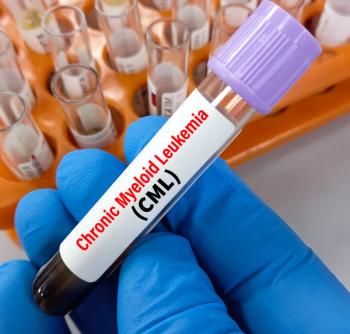
Pharmacy Practice in Focus: Oncology
- December 2014
- Volume 1
- Issue 6
Provider Status in the States
State pharmacy associations are working to advance provider status legislation at the state and federal levels.
State pharmacy associations are working to advance provider status legislation at the state and federal levels.
With the introduction of House of Representatives Bill 4190, attention to pharmacist provider status at both the federal and state levels has greatly increased in the pharmacy community. State pharmacy associations across the United States are looking at how they can help to both advance the federal efforts and make progress in their own states. At both the federal and state levels, the main goal is providing patients with access to pharmacists’ services; the approaches to achieving this goal, however, are quite different.
At the federal level, provider status, or the recognition of pharmacists’ services as a covered benefit under Medicare Part B, both designates pharmacists as providers and establishes a mechanism for payment for their services. Often, this dual effect is incorrectly transposed into the conversation on state-level provider status for pharmacists. Although pharmacists can be recognized by state law as providers (and are in 37 states), that designation doesn’t have the same link to coverage for services that could be achieved with successful passage of HR 4190. The term provider status, when used to describe state-level advocacy efforts to increase patient access to pharmacists’ services, encompasses 3 types of activities: provider designation, optimization of the pharmacy practice act, and the development of payment mechanisms for pharmacists’ patient care services.
Provider Designation
Often, the first consideration in a discussion of provider status at the state level is the definition of pharmacists as providers somewhere within the state code. While this designation can eliminate one of the barriers to coverage for pharmacists’ services, it will not ensure patient access to those services. Language that identifies pharmacists as providers can be found in several different places within state statutes, including the pharmacy practice act, the business and professional code, the public health code, and the insurance code.
The recently signed California Senate Bill 493 includes a provision that recognizes pharmacists as providers within their pharmacy practice act and includes several significant changes to scope of practice. The California Pharmacists Association worked with their members, other pharmacy stakeholders, and other health care providers to support this bill.
Optimization of the Pharmacy Practice Act
Ideally, pharmacists’ scope of practice should align with the education and training that licensed pharmacists receive. Unfortunately, this isn’t always the case. Scope of practice for all health professions is determined at the state level and is highly variable from state to state. Pharmacists’ scope-of-practice provisions include collaborative practice agreements, immunization and other medication administration, ordering and interpreting laboratory tests, and other public health— related provisions. Currently, there are 48 states that allow for collaborative practice agreements, though the specific scope of services that can be performed under those agreements, and under what conditions, varies. Pharmacists are able to administer immunizations in all states, and in some, are able to administer immunizations in accordance with Centers for Disease Control and Prevention guidelines without a specific prescription order.
In 2014, states where collaborative practice—related legislation has been enacted include California, Kansas, Minnesota, Tennessee, and Wisconsin. Several states also passed legislation that expanded immunization administration by pharmacists. Among those states were Florida, Maryland, Louisiana, and Missouri.
Pharmacist scope of practice is constantly evolving and will continue to do so as the practice of pharmacy, technology, and health care as a whole evolves. It is of critical importance that state pharmacy associations are a strong voice in representing pharmacists at the state level to ensure that the evolution of the pharmacy practice act is in alignment with the education and training that pharmacists receive and best serves the needs of patients.
Payment for Services
While scope of practice and provider designation are important in the pursuit of better patient access to pharmacists’ services, the current business model for pharmacy is often its most inhibitive barrier. Because the majority of pharmacists’ salaries are supported by the sale of prescriptions, the system promotes increased prescription volume and limits the time that pharmacists have available to work directly with patients. Professional dispensing fees and product reimbursement continue to decrease, with pharmacies often losing money on the dispensing of some prescriptions. This trend places additional pressure on pharmacies to increase volume and cut pharmacy staff hours. Without a change in this business model, pharmacists will continue to have limited time to counsel patients and effectively manage their drug therapy.
As the profession of pharmacy pushes for a solution in Medicare Part B to provide coverage for pharmacists’ patient cares services, state pharmacy associations are working with state and private payers to do the same. There are several approaches that have been taken at the state level, including coverage of pharmacists’ services in state-provided health benefits (state employee health plans and Medicaid), a mandate for private insurers to provide coverage, and direct coverage by private insurers. Examples of these efforts can be seen across the country.
Already there are many state employee health plans and state Medicaid programs that are providing coverage to their beneficiaries for pharmacist-provided patient care services. The services that are covered range from smoking cessation counseling to comprehensive diabetes management. In other states, the state pharmacy associations have demonstrated to payers the value that pharmacists provide. These payers have subsequently added certain pharmacist-provided services as a covered benefit for their patients.
Making It Happen
Activity in all 3 areas of state provider status efforts is important for each state in the pursuit of patient access to pharmacist patient care services; however, each state has different needs and will take a different approach. State pharmacy associations are continuing to develop and act upon their strategies to address these issues in their states. In order to be successful, it will be of critical importance for all pharmacists to engage as active members in their state association. To learn more about work being done in your state and how to get involved, contact your state pharmacy association.
Krystalyn Weaver, PharmD, is director of policy and state relations at the National Alliance of State Pharmacy Associations. She earned her PharmD at the University of Toledo.
Articles in this issue
almost 11 years ago
Blood Pressure and Cholesterol: Embracing New Guidelinesalmost 11 years ago
Medicine Education: Pharmacists as Providers of Patient Informationalmost 11 years ago
Provider Status: A 3-Part Constructalmost 11 years ago
Provider Status Will Bring New Challengesalmost 11 years ago
I Have Been a Provider for Over 2 Decades...Haven't I?almost 11 years ago
HR 4190: Addressing Increased Demand for Chronic Care Servicesalmost 11 years ago
The Future of Pharmacyalmost 11 years ago
Be Careful What You Wish Foralmost 11 years ago
A Health-System Perspective: The Evolution of the Pharmacist's Rolealmost 11 years ago
Managing Schizophrenia: The Role of Pharmacies in Providing Continuing CareNewsletter
Stay informed on drug updates, treatment guidelines, and pharmacy practice trends—subscribe to Pharmacy Times for weekly clinical insights.























































































































































































































